|
Parenting is a wild ride. For anyone who is a parent to small children, they can attest to the highs and lows that this responsibility can have. Children are full of joy and curiosity, they show the purest form of love, and they can be sweet and kind to others without fear or embarrassment. Children are also full of big feelings, strong wills, and lots of opinions without the ability to reason their way out of problems. It’s complicated and confusing. Even to the best-intentioned parents, it can feel overwhelming and stressful. Meanwhile, you experience the sweetest moments in between. My husband and I are parents to a 4 year-old that fits this description. We are trying and we are definitely getting it wrong sometimes, but we want what is best for little Vincent and we love him more than we knew we could.
There is a lot of noise out there about parenting, and everyone wants to give advice and share their best practices. Whether on social media, in endless books of how-to’s, or from relatives and friends, there seems to be a never-ending amount of information to sort through and try out. One way that I have taken a pause from this noise is by learning from the saints. I have looked up to so many for various things in my life – for personal reasons or in deepening my relationship with Christ. But now as a parent, I look to what I might call “the experts” who raised the mother of our Savior, Sts. Joachim and Anne. I have drawn a few relatable comparisons between these two people, who remain supportive and hopeful to the Holy Family. Saints Joachim and Anne are the patron saints of parenting and grandparents. Having been childless for the majority of their married life, the two continued to pray for God’s favor and have hope. While Joachim retreated for prayer far from home, Anne grievously prayed for her husband’s safety in exchange for dedicating any future child’s life in service to God’s plan. The two then shared a dream and vision where an angel told them that their fervent prayer had resulted in God choosing them to conceive a “wondrous” child. When Mary was born and became of age to be presented in the Temple, they brought her and followed the plan of God. There are parallels in their hope and dedication to faith that I have seen in so many parents I know and have met, and their faith is admirable and should be celebrated. Grandparents are special. My family is lucky enough to have grandparents actively a part of my son’s life. Whether in his day-to-day childcare or in the vacation weeks spent with them, my husband and I would not be the same without their care and love in our lives and in our son’s life. A lot can be learned in the witness that the previous generation brings to our current lives; for good, bad, or otherwise, these people raised us and taught us how to love and live. Now, it is fun to see how they adore and dote on their grandchildren in ways we never quite knew was possible. The whole family unit, then, is a masterful conglomeration of love, mistakes, trying things, and showing up. Imperfectly, and unconditionally. Not everyone has this experience; I am very aware of that. But for those of us that do, in whatever small way or mix of ways families can be, it is fearfully and wonderfully made. Saint Joachim and Saint Anne were faithful examples of the hardship that parents and grandparents can face. They suffered in ways we as parents similarly suffer, but they remained resolute in their fervent prayer and unshakeable love for God and for each other. Their daughter became the Virgin Mary, and their grandson became Christ himself. Although I recognize this is a little bold, we as Catholic parents cannot deny that our little rascals could one day become the saints of future generations who love and also remain faithful to Christ. Parents, pray for courage to love. Grandparents, pray for your children and grandchildren’s hope. Stay faithful and the Lord will see your love. A Parent’s Prayer from Loyola Press Loving God, You are the giver of all we possess, the source of all of our blessings. We thank and praise you. Thank you for the gift of our children. Help us to set boundaries for them, and yet encourage them to explore. Give us the strength and courage to treat each day as a fresh start. May our children come to know you, the one true God, and Jesus Christ, whom you have sent. May your Holy Spirit help them to grow in faith, hope, and love, so they may know peace, truth, and goodness. May their ears hear your voice. May their eyes see your presence in all things. May their lips proclaim your word. May their hearts be your dwelling place. May their hands do works of charity. May their feet walk in the way of Jesus Christ, your Son and our Lord. Amen.
0 Comments
 We are in the time of the Upper Room, the Cenacle. The days between the Ascension of the Lord and Pentecost are liturgically the time when the Blessed Virgin Mary, the Apostles, and the disciples were together in prayer, awaiting the coming of the Holy Spirit. They did not really know what to expect. In fire and wind, the Holy Spirit came, and their lives were transformed forever. The world is also transformed and is transforming. The mission continues in the name of Jesus Christ! We are sent as apostles, as missionary disciples, out into the world. Hiding in a room, in our homes, even in a church is not our call. Instead, we go forth, going where the Holy Spirit moves us to go. We can do amazing things in the name of Jesus Christ. There is no need to wait until someone invites us. No, if we are baptized, and especially if we are confirmed, then we can go forth! We need to recognize, though, that we do not send ourselves. We are sent by Christ, in and through his Church. The community of faith that we call Church is where we go forth from and to which we return. The Church teaches us, forms us, heals and nourishes us through the Sacraments, and sends us on mission. The mission is not ours; it is Christ’s. We, as members of Christ’s Faithful, are called to live his mission until he comes again, just as the Apostles were told to do. In all of this, Mary, Queen of Apostles, is with us as our Mother and Queen. Her feast day is the day before Pentecost. She was the perfect disciple of Christ. St. Vincent Pallotti said of her: “We have most holy Mary, after Jesus Christ, the most perfect model of true apostolic zeal, and of perfect love” (OOCC I, 7). The Decree on the Apostolate of the Laity of the Second Vatican Council echoes this sentiment of Pallotti: “The perfect example of this type of spiritual and apostolic life is the most Blessed Virgin Mary, Queen of Apostles, who while leading the life common to all here on earth, one filled with family concerns and labors, was always intimately united with her Son and in an entirely unique way cooperated in the work of the Savior… All should devoutly venerate her and commend their life and apostolate to her maternal care” (4). Mary, Queen of Apostles, pray for us! May the charity of Christ urge us on! To learn more about Mary, Queen of Apostles, please click here. **This blog was originally published on May 19, 2021.**
“She said yes!” is commonly heard in engagement stories, echoing the excitement and joy of making the decision to have one’s life forever complemented with another in marriage. As we prepare to celebrate the Solemnity of the Annunciation on Saturday, the Church rejoices in Mary’s acceptance of God’s place for her in His divine plan of the salvation of mankind. Of course, Mary’s “yes” to God is not the only such instance in Scripture; on the contrary, each protagonist’s story within its pages involves his or her responding to the will of God throughout history, from God’s command to “be fruitful and multiply” to Adam and Eve through his instruction to the exiled St. John the Evangelist to “Write, therefore, what you have seen, what is now and what will take place later.” Just like each person in Scripture, we too can share in the delight of accepting God’s will for us through our faith and the surrendering of our personal desires and wants to Divine Providence.
Every book of the Bible recounts at least one instance of God calling a prophet, judge, king, or another figure, no matter their status, to a higher purpose. I particularly enjoy the story of the boy Samuel, whom God called three times before the future judge and prophet, finally understanding Who kept waking him, answered. All of these accounts are more than nice stories—they serve to illustrate the different ways of answering God’s call as well as how God continues to guide us after we answer. The biblical theme still rings true today: “I have called you by name, and you are mine.” On the occasion of the Annunciation, Mary’s “yes” undoes Eve’s “no” to God. Through Mary, the Word was made flesh and she became the new “Mother of the Living” (CCC 489). This motherhood extends to us all! As a result of Mary’s “yes,” she became a tabernacle of the living God now made man. Christ’s complete embrace of humanity during His earthly ministry still affects us today. We are called to allow Him to more fully enter into our lives just as He did in the Virgin’s womb. By creating space for Christ, as Mary did, we are enabled to fully surrender to the Divine Will; our “yes” to God can then echo Mary’s crucial response, “Behold, I am the handmaid of the Lord. May it be done to me according to your word.” How shall we respond? At the Archdiocese of Washington’s Rite of Election this past month, I was blessed to observe over a thousand adults, teens, and children be presented to the Cardinal in order to be baptized or confirmed as Catholics in the Archdiocese of Washington this Easter. They, like Mary, have said “yes!” to God’s invitation. It’s a beautiful witness to see the participants’ formal expression of their desire to become Catholic before their loved ones, sponsors, and the Church. The Rite of Election kicks off a final period of intense spiritual preparation much like our experience of Lent, in which they are called to follow the Lord. As baptized members of Christ’s Body, we are called to offer our support, love, and prayers for these catechumens and candidates as each continues his or her faith journey, that all may strive to remain close to the Lord Who has called them to Himself. Our “yes!” does not occur in a vacuum. Even the already baptized are called to be a light for each other as each of us experiences darkness in our lives. No matter our insecurities or doubts, no matter our past failings or unworthiness, God still continuously calls to us, ever lovingly, ever patiently, ever gently, ever earnestly. Mary had her own questions when the archangel Gabriel dramatically announced God’s plan for her. If you’re like me, you want all the details before making a decision! But, as we read throughout scripture, one’s trust in God is never misplaced. God can—and does—do great things through us if only we allow ourselves to be like “a little pencil in the hand of a writing God.” May we, then, always share the Good News of Christ’s Resurrection, the hope that we share as we receive Communion, as we journey to the Cross, and as we profess—and experience—God’s love. By the grace of God and the support of each other, may we, at every moment of our lives, join with the whole Church and the heavenly host to praise God for His mercy and goodness: “‘Our Savior, Jesus Christ, has destroyed death, and brought us light and life!’ No wonder we [reply], ‘Alleluia!'” (Cardinal Timothy Dolan) **This blog was originally published on March 23, 2017.** As we enter into the second week of Advent, I am drawn to reflect on Mary’s advent 2000 years ago. This period of preparation can be difficult to enter wholly into, especially in a secular world that desires to skip straight to Christmas, but one way to more fully experience the anticipation of Advent is to look to Mary. We can observe how to live out her anticipatory advent of bringing Christ to others in silence every time we receive Our Lord in the Eucharist. When Mary gave her ‘fiat’ at the annunciation, the Christ-Child was made incarnate in her womb, and she spent nine months silently bearing Christ within her and bringing Him to every person she encountered. How radical that intimacy must have been, to be the only soul on earth who knew Christ, the only one to match heartbeats with Him, to be the source of life for the savior of the world. And yet, this time of intimacy was one of great silence and humility. The Christ-Child in the womb did not make a sound, for the first several months there was little sign that Our Lady could take consolation in His presence besides the promises given to her during the Annunciation. In that silence the only way Our Lady could know her Son and King was through allowing herself to become so silent as to hear the heartbeat they shared. This silence leads to the humility of Our Lady giving all of herself to Our Lord, and this humility of laying her life down fully leads to her willingly bearing the persecution of her advent. In the greatest humility, Mary walked around Nazareth bearing the King of the Universe, and allowed assumptions of her character to be made. She did not make a scene with those she encountered, announcing loudly that she was the Theotokos, but rather allowed Christ to work in the silence, as seen in the narrative of the Visitation, when the child within Elizabeth’s womb leaps for joy at an encounter with Christ. It is in all of these reflections that we as children of Mary learn how we are also supposed to live in advent. Like Mary, we hold the Christ-Child so intimately within our very bodies every time we receive the Eucharist. We get to experience our own advent each time Our Lord enters humbly into us – the simple veil of bread and wine mimicking the simple veil of infancy which hides, from those who do not hold Christ, the reality of His presence. We have nothing we could give our King that would be a worthy offering, so we offer Him our lives. We allow Him to transform us into living tabernacles, our breath becoming His breath, our steps becoming His steps. We carry Him in our hearts and through the silence of our witness, allow Him to encounter the people we meet. Through living our lives in recognition that we carry Christ in our hearts, we grow in desire to bring Him to those we encounter first before we bring ourselves, and we learn to live in a perpetual advent, like Our Lady, allowing Our Lord to become the source of life within us.
For many of us, the “infancy narratives,” from Matthew and Luke are well loved, but also well worn. Gabriel’s visit to Mary, Mary’s visit to Elizabeth, the birth of Our Lord in Bethlehem — not only do we ponder these events every year during Advent and Christmas, but also every time we pray the Joyful mysteries of the rosary. We know the stories, we know what they illustrate, we know why they’re important. But knowing the basic bullet points of the New Testament is not enough. We are called to know our Lord more deeply, more intimately. Dei Verbum compares the gift of Scripture to the gift of the Incarnation: “for the words of God, expressed in human language, have been made like human discourse, just as the word of the eternal Father, when He took to Himself the flesh of human weakness, was in every way made like men” (13). The Holy Spirit has bundled the immensity and perfection of God into our limited and imperfect human language. Like Christ contained himself in human form, so too has the Father contained himself in our human tongue. This Advent, let us return to the infancy narratives with fresh eyes. Recognizing that, like St. Ignatius advised his Jesuits to do while on mission, we can use the Word to ignite our senses, engage our collective memory as the people of God, and to understand our Lord as both father and friend. The Visitation of Mary to Elizabeth (Luke 1:39-56) is one moment from the infancy narratives that can prepare us in a special way for the coming of our Lord this Christmas. It provides us with a snapshot of Mary as a loving servant who is familiar with the Scriptures, bubbling over with joy, and confident in the promises of her God. Her example is one we can imitate even today. Spend some time with the narrative here and then consider Mary’s threefold approach to Advent:
Amidst the flurry of shopping, visiting, and end-of-year work activities that will surely fill our Advent calendars this season, take five minutes a day to spend time with God in prayer. If you struggle with prayer and don’t know what to say, read the Magnificat. Imagine a young, triumphant Mary, glowing before gray-haired Elizabeth and try to imagine the feelings of joy and wonder Mary must have felt in those moments. Then ask the Lord to help you channel that wonder as you prepare a place for him in your heart. Let your soul proclaim the greatness of the Lord this Advent, through joy, Scripture, and service. **This blog was originally published on December 1, 2016.** **This image is from: https://diglib.library.vanderbilt.edu/act-imagelink.pl?RC=48279** Last Tuesday, November 21, we celebrated the feast of the Presentation of Mary. According to tradition on this day, Mary, at the age of 3, was presented in the temple by her parents St. Ann and St. Joachim, and her life was consecrated to God. For many years this feast was something I didn’t understand, and it wasn’t until last spring when I had the opportunity to visit the Holy Land that I was able to more fully appreciate this beautiful feast. When in the Old City of Jerusalem, you are able to see how small the city was at the time of Jesus’s life. One example of this is the proximity of the place where Mary was presented to Mount Calvary. It only takes a few minutes to walk from one place to another. During the passion, Mary would have passed this place. In other words, in the midst of the greatest suffering of her life, Mary would have passed the place where her parents, in gratitude, gave her life entirely to God – the place where her ‘fiat’ began. I often find myself meditating on this idea when praying the fourth sorrowful mystery of the Rosary – that Mary in suffering would be consoled with the memory of God’s faithfulness to her parents in bringing them a child. In passing the place where both she and her son were presented to God, how her heart must have felt both the overwhelming joy and premature sorrow of the sword Simeon promised would pierce her heart as he sang his canticle rejoicing in the Incarnation. In the midst of watching her only Beloved Son mocked, beaten, and killed, she remembered the song of her Magnificat and sang the praises of the psalms in her heart. Her heart must have been pulled into the prayer of Psalm 23 as she walked up towards Golgotha, “Even though I walk in the valley of the shadow of death, I fear no evil for you are with me; your rod and your staff comfort me.” Mary did not forget that God had been faithful her entire life, and did not doubt His faithfulness at the darkest hour of history. Rather, she clung to Him and obediently received His will, despite the sorrow it caused her immaculate heart. We learn to suffer well from the model of Our Blessed Mother, and one of the most important aspects of faith in suffering is to remember God’s own faithfulness. Like Mary, we can turn back towards God in the midst of suffering, we can remember the moment that we met Jesus and our lives changed, remember the moments where we experienced the overwhelming radical love of God, and hold onto that love and faithfulness as truth. Mary’s presentation calls us to reflect on all the different times throughout our life that we have seen God be faithful, and trust that He will be faithful once again. This feast calls us to give ourselves wholly to God as Mary did, and trust that His will be done – and that His will is good – in all things.
When I was first introduced to the Congregation of Holy Cross as a student at Saint Mary’s College at Notre Dame, I was confused why their patron is Our Lady of Sorrows. I see myself as a cheerleader for my loved ones and try to bring joy to everything I do in life. Studying psychology and theology taught me more about the depths of joy and the paradox of holding joy and sorrow simultaneously. Joy and sorrow are not analogous to happiness and sadness. So, I can still bring joy even when accompanying others in sorrow. In the first letter from St. Paul to the Corinthians, we learn that faith, hope, and love are the three things that will last forever. We cannot have one without the other two. We have hope because we have faith and love. As a Christ-centered marriage and family therapist, I have a couple of images of the sorrowful mother in my office so my clients are reminded that they are not alone in their suffering. The Church provides a way to reflect on the Seven Sorrows of Our Lady. In each of these arrows that pierce her heart, she is either holding, searching for, or gazing at Jesus. The Seven Sorrows of Mary:
At the Wedding at Cana, Jesus told his beloved mother that if he began his public works, their humble life together as a family would never be the same. He would no longer be just her son but recognized as the Savior of all. She would no longer be just his mother but the mother of all. She consented to this road of suffering because she trusted God and meant her words at the Annunciation, “may it be done to me according to your word.” (Luke 1:38) Imagine Mary at the foot of the Cross. She was full of sorrow watching her son take his last breaths. What kind of mother would she be if she was not sad watching her son suffer? In her tears, she believed (“Blessed are you who believed that what was spoken to you by the Lord would be fulfilled.” Luke 1:45) in the God she knew so intimately and loved with a heart that was not tarnished by sin. So, if it is okay for her to be full of sorrow, it is okay for each of us, too. We must be cognizant that our sorrow does not turn us away from the Cross in despair, but rather leads us toward the Cross in hope. We do not venerate the Cross because it is a torture device, but rather an instrument of salvation. Good Friday is not the end of the story, and Easter Sunday cannot exist without Good Friday. St. Paul wrote to the Romans that “all things work for good for those who love God.” (Romans 8:28) God does not waste anything and does not leave us alone in our sorrow. As Catholics, we believe in redemptive suffering; we can offer our suffering for the redemption of the souls of others. Mary is the first and greatest disciple and her intercession is incredibly efficacious. In my life and the lives of the clients I journey with, I have witnessed that the greatest transformation comes from seasons of sorrow. It is in those most challenging moments that Jesus and Our Sorrowful Mother embrace us with such tenderness and empathy. “For we do not have a high priest who is unable to sympathize with our weaknesses, but one who has similarly been tested in every way, yet without sin. So let us confidently approach the throne of grace to receive mercy and to find grace for timely help.” (Hebrews 4:15-16) Mother Teresa so beautifully says that, “Pain and suffering have come into your life, but remember pain, sorrow, suffering are but the kiss of Jesus - a sign that you have come so close to Him that He can kiss you.” As you carry your crosses this week, may you see it just as a piece of the puzzle that God is building in your story. Jesus is not defined by the Cross; He overcame it. You are not defined by your crosses, either. St. John Paul the Great says, “we are an Easter people and Alleluia is our song.” In tragic circumstances, look for the heroes. In times of darkness, look for the light. I think of a hymn written by Steve Warner that is often sung on the campuses of Notre Dame and Saint Mary’s College. The refrain is: “Cross of our hope, and tree of our salvation, Sown in our land, and spread near and far, Life-giving fruit, our portion and our promise, Ave Crux! Spes Unica!” https://www.youtube.com/watch?v=Lk8fpSzM8LA **This image is from: https://artuk.org/discover/artworks/study-of-the-pieta-127796**
On September 12th, the Church celebrates the feast of the Most Holy Name of Mary. Throughout the year we honor countless saints who have uniquely modeled for us the path to holiness. However, Jesus and Mary are the only two people for whom the Church sets aside a feast just for their name. Each person’s name deeply and intimately reveals something about who they are. If this is true for myself, you, and each of the saints, it is all the more true for Jesus and His Blessed Mother.
Throughout the centuries, Mary has earned countless and various titles based on the places she has appeared and the different characteristics that define her. But before all of these, she was given her first title by the child Jesus: Mom. This wasn’t a title Mary could have given herself; rather it was bestowed on her. The Father chose Mary to conceive and bear Jesus, and it was in His birth that she became a mother. It was through the Incarnate Lord that Mary’s motherhood was fulfilled and she became “Mom.” For all of the times you have called your own mother’s name, Jesus called Mary “mother,” too. He spoke her name in joy and in sorrow, in petition and in gratitude. He models for us how to live in relationship with His own blessed mother and how to speak her name. However, even with Jesus showing us the way to His mother, it can still be a challenge to have a relationship with Mary. How do we relate to her and live under her maternity? How do we speak to Mary, our spiritual mother? The Church models so many beautiful devotions in answer to this question. We can pray a morning offering through the Immaculate Heart of Mary, asking her to be with us throughout our day. We can pray the rosary, walking alongside her through Jesus’ life. We can sing a Marian hymn with our nightly prayers, inviting her to watch over us in our rest. When we speak Mary’s name and call out to her as our spiritual mom, we are fulfilling St. Francis de Sales' words to “run to Mary, and, as her little children, cast ourselves into her arms with a perfect confidence.” We can give ourselves to Mary, like Jesus did, and she will in turn bring us closer to God. In the repetition of these Marian prayers and hymns we spiritually speak our mother Mary’s name and ask for her help from the depths of our hearts. Just like our earthly mothers cherish the little gifts we give and imperfect efforts we make, Mary graciously receives and multiplies everything we call out to her from our heart. Mary doesn’t need us to come to her with perfect devotion, but with an honest desire to grow closer to Jesus through her. Day after day, we can speak her most holy name and call on her assistance with the confidence that she will come to our aid. As we honor the Most Holy Name of Mary, we pray the Lord will enkindle in us a deeper trust and devotion to His mother. Let us speak Mary’s name with love and devotion, trusting in the power of her intercession and mediation for us. Mama Mary, pray for us! **This image is from: https://commons.wikimedia.org/wiki/File:William-Adolphe_Bouguereau_The_Virgin_With_Angels.jpg*** Both of my grandmothers had great devotion to the Blessed Mother. I remember going to their homes and seeing statues of Mary and other saints, prayer cards, and crystal and silver rosaries. I learned much from them and my mother about devotion to the Blessed Virgin Mary. Back in 1901, on this day, the feast of the Most Holy Name of Mary, my grandmother, Millie Donio, was born. During my childhood, though, I did not know that it was a feast day, because with the reform of the liturgical calendar in 1969, the feast was removed. Restored by Blessed John Paul II in 2002 in the revised Roman Missal, it is now an optional memorial. Interestingly, there is only one other feast related to the name of a person, the Most Holy Name of Jesus, celebrated on January 3rd. This feast day was restored in 1996. The name, Mary, could mean “sea of bitterness” or, possibly, “beloved”. Consider for a moment how many situations Mary found herself in that could have resulted in bitterness. When the unwed young Mary was told by the angel Gabriel that she was pregnant by the “power of holy Spirit,” she did not focus on her own situation, but made herself available to her cousin Elizabeth (Lk 1:39-40). When her son, Jesus, went off preaching suddenly at age 30, the scriptures show no evidence of her complaining about it. Instead, she says, “Do whatever he tells you” (John 2:5). No bitterness there. When she is at the foot of the cross watching her son die before her eyes, powerless to do anything about it, she accepts being given over the care of the Beloved Disciple, he as her son, she as his mother (John 19:26-27). Sorrow, yes. Bitterness, no. A “sea of bitterness” around her, but she, being the perfect disciple, shows us the way to be. She shows us how to live as beloved by God. My grandmothers showed me how to live as one beloved by God. They each had their various hardships in life – physical sufferings, emotional difficulties, financial challenges – but each held firm to her faith and it was faith in God that sustained them. They each moved outside of themselves and cared for others, even in the midst of their own struggles. I will never forget going with Grandmom Donio quietly dropping off bags of fruits and vegetables at the back doors of the homes of people she knew were in need of them, but were not able to ask others for help. No words exchanged, we were not even seen, just an action done for good because the other is beloved by God. Being beloved by God does not mean there will be no suffering or challenge in life. Being beloved by God, called by our name in Baptism, which claimed us for Jesus Christ, we are not left alone to simply move through life. We have the ones we call by name, Mary who intercedes for us with the other person we call by name, Jesus, who is also the Son of God. We call also on the names of the other baptized in the community of faith, the Church. We call out with all of our needs as we live in what can seem at times like a “sea of bitterness.” But, we are not meant to be bitter in life, no matter what we experience. Pope Francis offers us encouragement to move out of ourselves toward others: “Let us never yield to pessimism, to that bitterness that the devil offers us every day; let us not yield to pessimism or discouragement: let us be quite certain that the Holy Spirit bestows upon the Church, with his powerful breath, the courage to persevere and also to seek new methods of evangelization, so as to bring the Gospel to the uttermost ends of the earth (cf. Acts 1:8)” (Audience with the College of Cardinals, March 15, 2013). What are we to do then? Not live in bitterness, but witness as ones beloved. We are to call others by name and assist them in being good disciples of Jesus Christ, following the pattern of life and asking the intercession of the one called Mary. **This blog was originally posted on September 12, 2013.**
On May 31st, our Church celebrated the Feast of the Visitation—that hallowed moment when Elizabeth was greeted by her cousin Mary and when Scripture tells us that the infant leaped in her womb. We hear that the very first thing that Mary did after she was visited by the angel Gabriel was go and visit her cousin Elizabeth. The line that always sticks out to me from this Gospel account of the Visitation is: “During those days Mary set out and traveled to the hill country in haste.” Mary did not just travel to visit her cousin - to celebrate the faithfulness of God and what He had done for her – but she traveled immediately, quickly, and with haste. Not only did Mary know that the good news of the Incarnation - of God dwelling in her very womb - was too good to keep to herself, but she also knew of the importance of showing up for those whom she loved most. One of the things I believe most firmly about our lives as Christian disciples is that when we encounter the faithfulness of God (either in our lives or in the lives of those around us) we are called to share it with others. It can be all too easy to think that the stories of Mary and Elizabeth - one conceiving by the power of the Holy Spirit and the other receiving the gift of a child after being called barren - is some far off story that happened 2,000 years ago and not something applicable to us. We must ask ourselves: Where have I experienced the faithfulness of God in my life? Where have I seen it around me? Where am I being called to share it? Am I making haste to get there? I was lucky enough to attend a school called Visitation High School; as you drove up the main drive to our school building, there was a beautiful statue of Mary and Elizabeth embracing. Every day I was reminded of the great joy that they shared with each other and ultimately the peace that came by believing that what was promised to them would be fulfilled. (Luke 1:45). In our hurting, broken, and messy world, we could use more moments of making haste. Making haste to show up for a friend that we know is suffering. Making haste to share the good news of Jesus with a family member or friend. Making haste to celebrate our loved ones even while we experience sorrow or hardship. It is the great privilege of the Christian to make haste like Our Lady, to show up and to share the good news that,“The Mighty One has done great things for me, and holy is His name.” (Luke 1:49). **This post was originally published on 6/13/2019**
Did you know that as Catholics we commemorate the month of October as the month of the rosary? The rosary calls us to reflect on thelife of Christ through the intercession of Mary, our Blessed Mother. The rosary is an invitation for us to build a relationship with Mary, so that we can better know her son. St. Thomas Aquinas once said, “As mariners are guided into port by the shining of a star, so Christians are guided to heaven by Mary.” One way to get to know Mary is by reading about her life from scripture. Mary’s words are not recorded often, and her actions seem to skim by even more subtly. Even so, the presence of her words and actions are profound, calling us to a deeper relationship with her and her son.
First, we learn from Mary that it is okay to ask questions on our faith journey. When the angel Gabriel announces to her that she will be the mother of the Son of God, she simply asks, “How can this be, since I have no relations with a man?” (Luke 1:34). To know ourselves and have confidence in what we believe, we should always be asking questions. As a teacher, I encourage my students to ask questions all of the time. Although I am not as good as I want to be myself, from Mary I can take courage to ask more questions so that I can learn and grow in hopeful faith. When Mary questioned the angel, she learned: “Nothing will be impossible for God” (Luke 1:37). And from there, we are called to take Mary’s example of humility and trust in her “Fiat” when she says, “Behold, I am the handmaid of the Lord. May it be done to me according to your word” (Luke 1:38). The second lesson that I have learned from Mary in the Bible has had the most profound impact on my life. After the birth of her son, and in the presence of the shepherds and angels, Luke records that “Mary kept all these things, pondering them in her heart” (Luke 2:19). For me, this calls me to a life of deep reflection and intimacy with God. What I keep in my heart can move me closer to God if I invite him to share it with me: the goodness of each day, the little and big miracles, and even the hard and difficult trials. With God, everything is divine and happens with purpose; it is how I react, reflect, and let him mold me with the contents of my heart that I can become most pure. Mary is the perfect model of this. She remembers God’s glory, and holds it fast to her heart. Her life is characterized by this. I want to revel in God’s glory in all things like Mary, so that I can share this joy and love with others, and trust in his goodness when trials arise. Finally, Mary’s last words in the Bible occur at the Wedding of Cana when the reception has run out of wine. She tells her son of his time to perform his first miracle, "They have no wine" (John 2:3), and it seems as though Jesus is not convinced. But next, Mary tells the servers, “Do whatever he tells you” (John 2:5) with the utmost simplicity and confidence. Not only does she know that he is capable of great things, but she knows that her son will do great things. And so we must “do,” too. This message – “do whatever he tells you” – is a call for all of us to follow the words of Christ. Mary can only lead us to her son if we submit to his will with the trust and confidence she has modeled for us. Like Mary, we too must live our life as a Fiat, “Lord, let it be done to me according to your word.” What beautiful gifts Mary gives to us to know her faith and to let her mold us to be more like her son. Do not be afraid to let Mary be the one to lead you to Christ. She is perfect, in that she knows how to live her life for God: “Mary’s greatness consists in the fact that she wants to magnify God, not herself” (Deus Caritas Est, 41). Let her help you magnify the Lord. Today I will be praying the “Magnificat,” which is found in Luke. It is Mary’s prayer of joy and thanksgiving to God. Please join me in asking for Mary’s guidance towards her son, to lead us to a life full of grace as hers. Mary’s Magnificat “My soul proclaims the greatness of the Lord, my spirit rejoices in God my Savior for he has looked with favor on his lowly servant. From this day all generations will call me blessed: the Almighty has done great things for me, and holy is his Name. He has mercy on those who fear him in every generation. He has shown the strength of his arm, he has scattered the proud in their conceit. He has cast down the mighty from their thrones, and has lifted up the lowly. He has filled the hungry with good things, and the rich he has sent away empty. He has come to the help of his servant Israel for he remembered his promise of mercy, the promise he made to our fathers, to Abraham and his children forever.” Luke 1:46-55 *This post was originally published on 10/20/2015*
Mary is known by many titles and depicted in a variety of ways. Today’s feast, the Memorial of Our Lady of Sorrows, offers us an image of a woman filled with sorrow, a grieving mother. This title reminds us that she was no stranger to suffering. Indeed, the Church contemplates seven sorrows she endured, which Pope Francis described in a homily in April 2020:
“The first, just forty days after the birth of Jesus, is Simeon's prophecy that speaks of a sword that will pierce her heart (see Lk 2:35). The second sorrow is the flight to Egypt to save her Son's life (see Mt 2:13-23). The third sorrow, those three days of anguish when the boy remained in the temple (see Lk 2:41-50). The fourth sorrow, when Our Lady meets Jesus on the way to Calvary (see Jn 19:25). The fifth sorrow of Our Lady is the death of Jesus, seeing her Son there, crucified, naked, dying. The sixth sorrow, Jesus’ descent from the cross, dead, when she takes Him in her arms as she held Him in her arms more than thirty years before in Bethlehem. The seventh sorrow is Jesus’ burial. Thus, Christian piety follows this path of Our Lady who accompanies Jesus.” Blessed Basil Moreau, who founded the Congregation of Holy Cross and dedicated the congregation to the patronage of Our Lady of Sorrows, said of her, “It is (in her sorrows) that we shall see to what extent she has loved us! She stood at the foot of the cross, among the executioners and soldiers, so close to her dying Son that no detail of his death could escape her. ‘There by the cross of Jesus stood Mary his mother’ (Jn 19:25). What did she do in this circumstance, so painful for her heart, being minister before the altar on which the sacrifice of our redemption was accomplished?” Though it must have been unbearable to behold the abuse and brutal murder of her Son, Mary did not turn away. She remained as close as possible to her Son and participated in Christ’s gift of self. When I am confronted with sorrow—either my own or that of others—I am sorely tempted to simply look away, to live in denial or numbness, or to let myself be distracted by anything else. Working through grief, facing injustice, embracing the cross is incredibly difficult. “But if we shirk the cross, gone too will be our hope. It is in fidelity to what we once pledged that we will find the dying and the rising equally assured” (Constitutions of the Congregation of Holy Cross, 8:121). Truly, the Christian life calls us not to look away but rather to have ‘a heart which sees’. This heart sees where love is needed and acts accordingly” (Deus Caritas Est, 30). Allowing ourselves to be moved by suffering, acting and trusting that suffering can and will be transfigured by God’s grace is not weakness. In fact, as Pope Francis described in his Lenten message for 2015, “Anyone who wishes to be merciful must have a strong and steadfast heart, closed to the tempter but open to God. A heart which lets itself be pierced by the Spirit so as to bring love along the roads that lead to our brothers and sisters.” When we remain as close as possible to Christ and allow our hearts to see as Mary did, we find new strength. In the pierced heart of the Sorrowful Virgin, we find consolation, refuge, and tenderness. We find a mother who can truly empathize, who embraces our wounds with her gentle touch, just as she embraced the bruised and broken body of her Son. May our tears mingled with Mary’s be a worthy offering of love. May we, like Mary, cultivate a heart that sees, a heart which is firm and merciful, attentive and generous, and bears pain and sorrow well, “with strength, with tears” (Pope Francis, homily, April 2020). May we make our own the words of today’s sequence (also known as the Stabat Mater and used frequently in the recitation of the Stations of the Cross): O sweet Mother! font of love, Touch my spirit from above, Make my heart with yours accord. Make me feel as you have felt; Make my soul to glow and melt With the love of Christ, my Lord. When I was pregnant with my first child, who is now eight, so many people talked to me about how much my life would change when the child was born. At the time, I thought that was mostly related to my day-to-day life: changing diapers, figuring out feeding schedules, coordinating childcare, managing doctor appointments, buying clothes and school supplies, and driving from soccer practice to Girl Scout meetings to gymnastics. While this is definitely part of it, what I did not fully understand is how profoundly my internal life would change—the incredible amount of love and devotion that would flow out of me on a daily basis to these two little humans. It is such a gift to be their mother and to have a front row seat to their lives. My daughters started back at school last week. It is exciting that they can be fully back in-person and we can somewhat go back to how things were before the pandemic hit. I pick up both girls at the end of the day. In the past, when I would walk into the classroom, they would run towards me with arms wide open and a giant smile on their faces. This has always been the best part of my day: seeing the love and devotion they have for me so clearly as they bound through the classroom or playground once they catch sight of me. As they get older, this changes. Last week, neither of them ran towards me; there was no smile or open arms. I was disrupting prime play time or the art project that would not be completed because it was time to go. Even though it was a small act, and I know of their love and devotion to me, it was such a punch to the gut for me. I know there will be more and more moments like this as they get older. No one can fully prepare you for when that happens. It just happens. Today, as we celebrate the Nativity of the Blessed Virgin Mary, I cannot help but think about both St. Anne and Mary as mothers. I think about the love and devotion they poured out to their new babies: keeping them safe and happy. I also think about those moments of punches to the gut that each of them felt when their children were small: how the love and devotion that poured out of them was slowly sucked dry as their children grew up and were not as reliant on them for all of the basic needs of life. For me, it is in these small but challenging moments that I need the support of the Blessed Mother, the supreme example of motherhood. Her grace and strength provide such an excellent example for mothers as we go through the day-to-day of life—the ups and downs, the challenges and the joys, the moments of light, and the punches to the gut. I love the line in Luke’s Gospel of Jesus’ birth when he writes: “And Mary kept all these things, reflecting on them in her heart” (Lk 2:19). It is almost as if she took a mental picture of everything that was happening, so she could remember back to that particular moment when she needed to. I try to do this in those moments of joy we experience as a family, so I can remember them when the girls are challenging me directly or indirectly, as was the case last week. We need to have moments of challenge to make us appreciate the moments of light and joy.
How much time do we spend fretting about the items on our to-do list? Whether it’s a long-term goal or a set of tasks for the day, the pressure to do all things (and to do them well) seems overwhelming at times.
In tomorrow’s feast of the Solemnity of the Annunciation of the Lord, we see how the Blessed Virgin Mary offers us an alternative to our preoccupation with personal accomplishments. Her response to the angel Gabriel’s message focuses instead on God’s initiative. The angel greets her saying, “Hail, full of grace!” (Luke 1:28), or in other biblical translations he refers to her as “highly favored.” Gabriel goes on to describe the greatness of the child she will bear: “He will be great and will be called Son of the Most High, and the Lord God will give him the throne of David his father, and he will rule over the house of Jacob forever, and of his kingdom there will be no end” (Luke 1:32-33). If I imagine myself in Mary’s place, I would find it very hard to resist merely contemplating my merits and basking in the divine recognition I had just received. Our Blessed Mother, however, thinks only of her lowliness before the Lord, identifying herself simply as “the handmaid of the Lord” (Luke 1:38). She knows that her “yes” to the Lord is far from simple. Because she was only betrothed to Joseph, her pregnancy could mean not only shame, but death by stoning. Despite such difficult circumstances and uncertainty as to how this could possibly come about (she asks, “How can this be?” (Luke 1:34)), she trusts in the power of the Most High. Allowing the Holy Spirit to work freely within her, she grants her full assent: “May it be done to me according to your word” (Luke 1:38). She gives no thought to how she can do this, but instead marvels at all that God does. Just a few verses later (Luke 1:46-55), Mary offers her great canticle known as the Magnificat, in which she proclaims the greatness of the Lord and all God’s mighty deeds. In her singular role within the history of salvation, Mary directs all attention to the grace of God that works within her. What a timely message during this liturgical season! It can be tempting to focus on what we have been doing (or not doing) for Lent. Yet this joyful mystery of the Annunciation prompts us to recognize what God is doing within us. After all, the purpose of a Lenten resolution is not simply to achieve a goal we have set for ourselves but to allow ourselves to be transformed by God’s grace. Perhaps in prayer over the next few days we might consider: How has God’s grace been at work in me lately? How can I entrust myself to the power of the Most High instead of getting bogged down in what I need to do and how challenging it may be? How can I allow the Holy Spirit to work in and through me? May our celebration of Mary’s life of charity, hidden sanctity, and faithful fulfillment of God’s will lead us to imitate her example, so that we too may be mindful of the great things the Lord has done in us and for us. January 1, Catholics celebrate the Solemnity of Mary, Mother of God, one of the holy days of obligation in the Church. This celebration is a special way to celebrate Mary’s special role in God’s plan in the Christmas story, as well as a way to start the year full of grace, ready to tackle those New Year’s resolutions. Although the practice of New Year’s resolutions is not distinctly Christian, our resolutions gain a new significance when we attend to Mary’s story. Discern Your Resolutions The story of Mary’s call to motherhood is a paradigm of Biblical discernment. When Mary received Gabriel’s announcement, “She was greatly troubled at what was said and pondered what sort of greeting this might be” (Luke 1:29). In faith, Mary wrestles with God’s calling. Even after her great “Yes,” and giving birth, “Mary kept all these things, reflecting on them in her heart” (Luke 2:19), revealing she is still learning what her vocation means and how to live it. What’s this got to do with New Year’s resolutions? Discernment is a spiritual, prayerful decision-making process between possible courses of action. What specific habits or practices is God calling you to work on this year? There are plenty of worthwhile resolutions—there’s a million things I need work on—but it’s just not all possible to accomplish in a year, or ever. Prioritize resolutions that strengthen your personal vocation. Expect Without Expectations Mary’s faith is “expectant” but without “expectations.” In other words, Mary expects God to act in her life, but doesn’t place limitations on who, what, when, and where. Mary trusts the angel Gabriel’s words, “nothing will be impossible for God” and is free to live and say, “May it be done to me according to your word” (Luke 1:37-38). Maybe God will bring about the outcomes of your resolution through unexpected ways or people. That’s the way it often works in scripture and the lives of the Saints. When you give God permission to act on his terms, you are free to boldly expect that God will do new and great things in your life this year. Make Room For Others Even free from original sin, God uses other people to accomplish his plan in Mary’s life. Mary’s story was made possible through her reliance upon truthful friends and family. Her cousin Elizabeth speaks truth and hope into her situation (Luke 1:42), and her husband Joseph goes to heroic lengths to let God’s call come to fruition. Share your resolution with someone you trust. Whether it’s a major lifestyle change or not, ask them to keep you accountable, and always with prayer. Accountability also prevents goals from becoming purely self-centered or even idols from seeking God first (e.g., just to impress people at the beach). No one can accomplish your resolution for you, but you can find people to accomplish it with you. Resolve to Live the Truth Mary shows the true path by always making everything about Jesus. “Do whatever He tells you” (John 2:5). A true personal change will always lead us to more fully reflect our true identities as sons and daughters created in the image and likeness of God. But the truth is, sometimes resolutions are born of self-loathing or lies we’ve bought instead of the desire to more fully reflect God’s truth. This often happens with body or image-related resolutions; to be thinner, smarter, stronger, etc. While these aren’t de facto bad things, the tendency becomes seeking physical solutions for a spiritual or psychological wound that really needs healing. That’s why discernment with spiritual direction and honest accountability is vital. Exercise programs or supplements say we should consult a physician first- but it’s also true when it applies to spiritual exercises for our soul! Mary and the saints save us from spiritual self-medication, which close us off from the Divine Physician. **This post was originally published on 12/30/2015. |
Details
Archives
July 2024
Categories
All
|
About |
Media |
© COPYRIGHT 2024 | ALL RIGHTS RESERVED




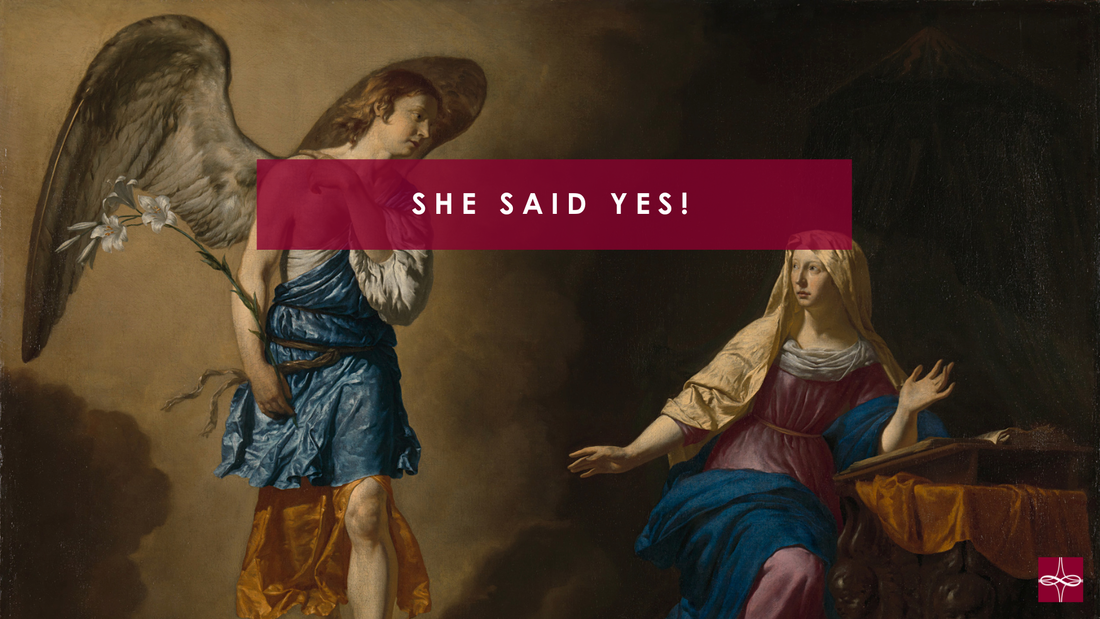

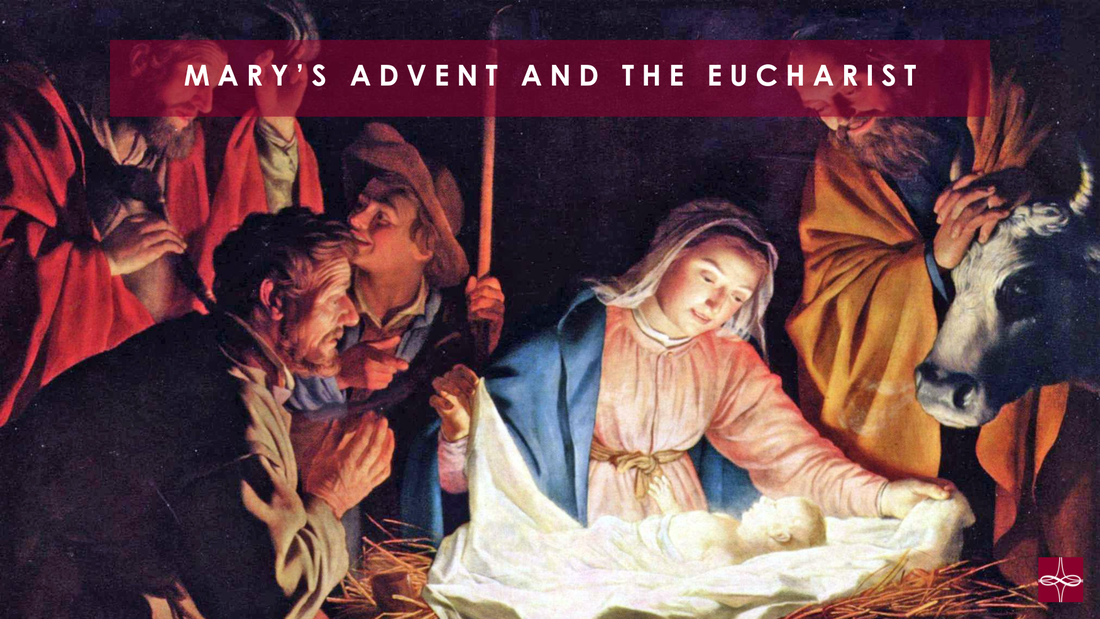

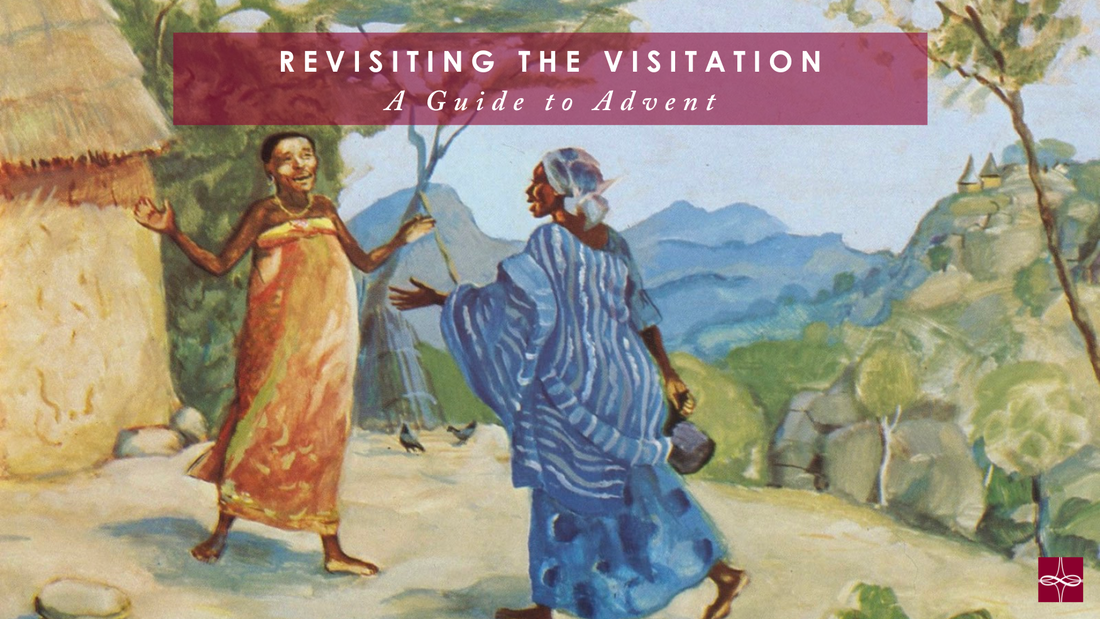

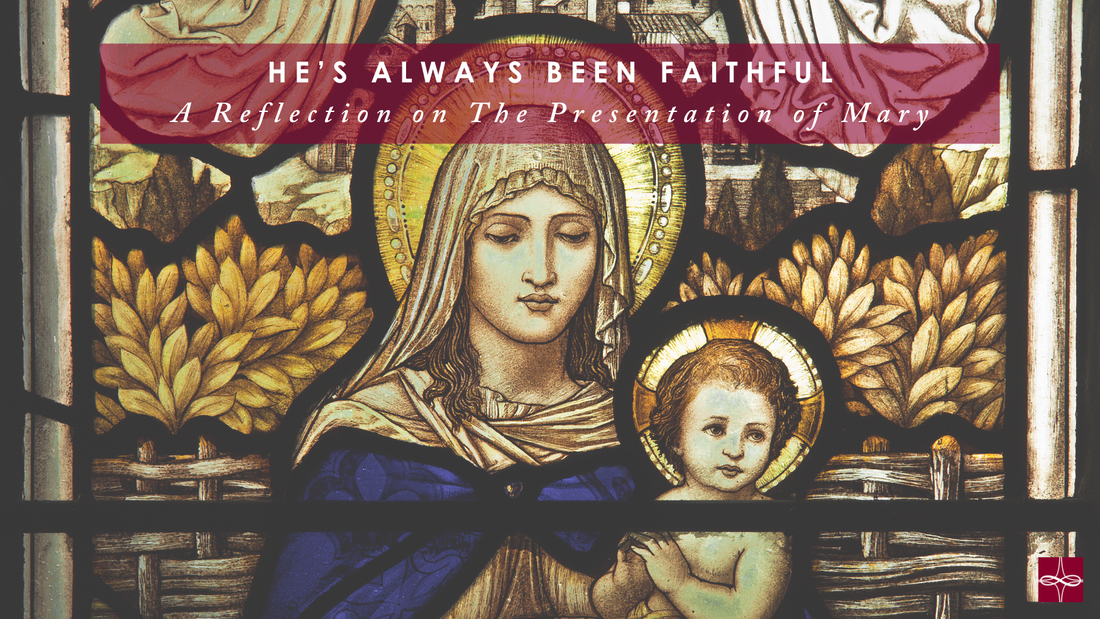
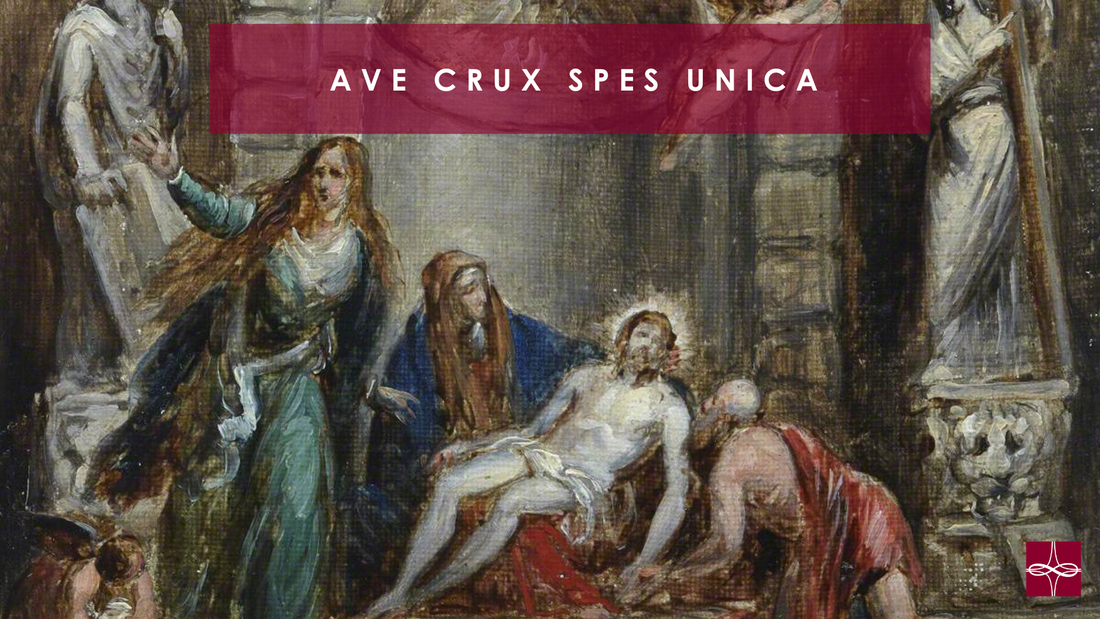
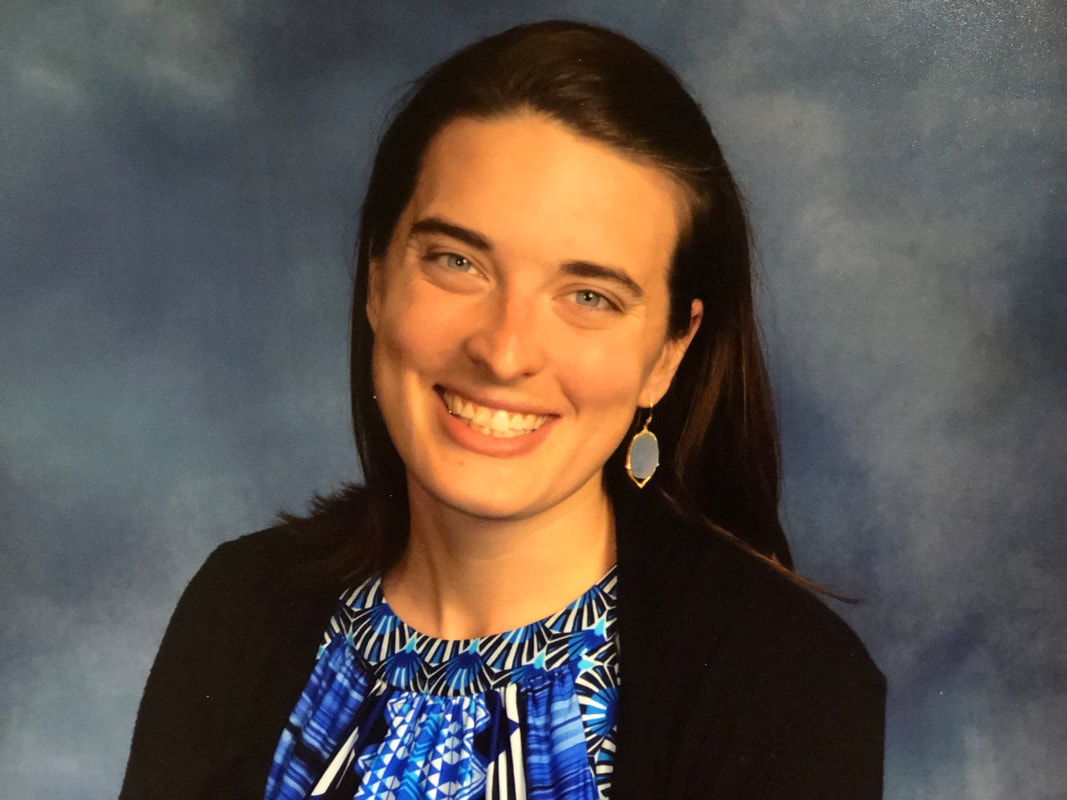
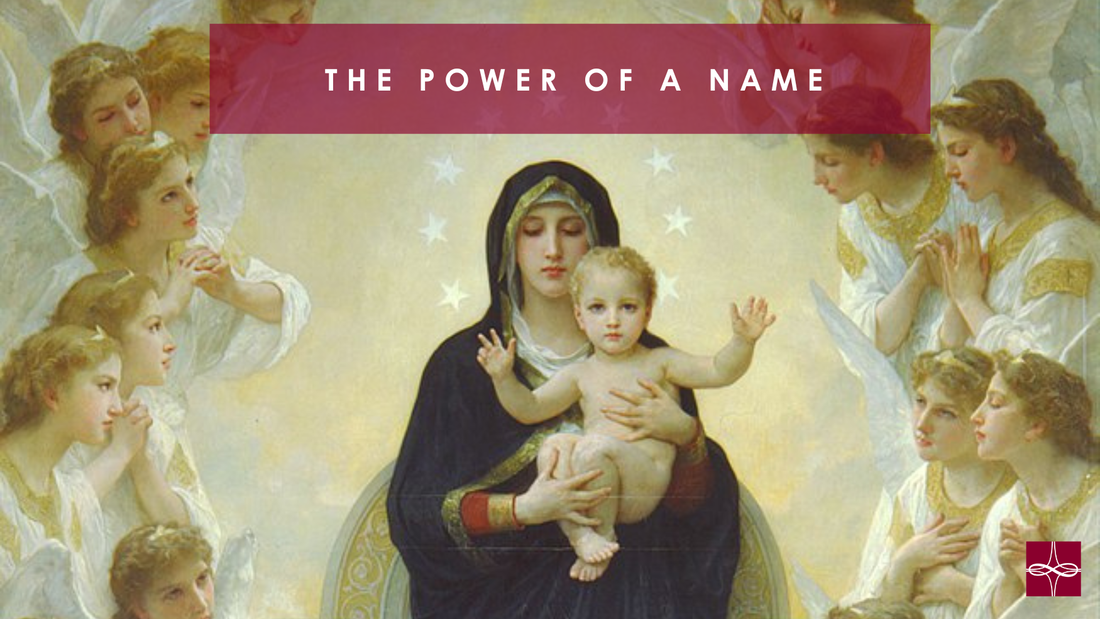

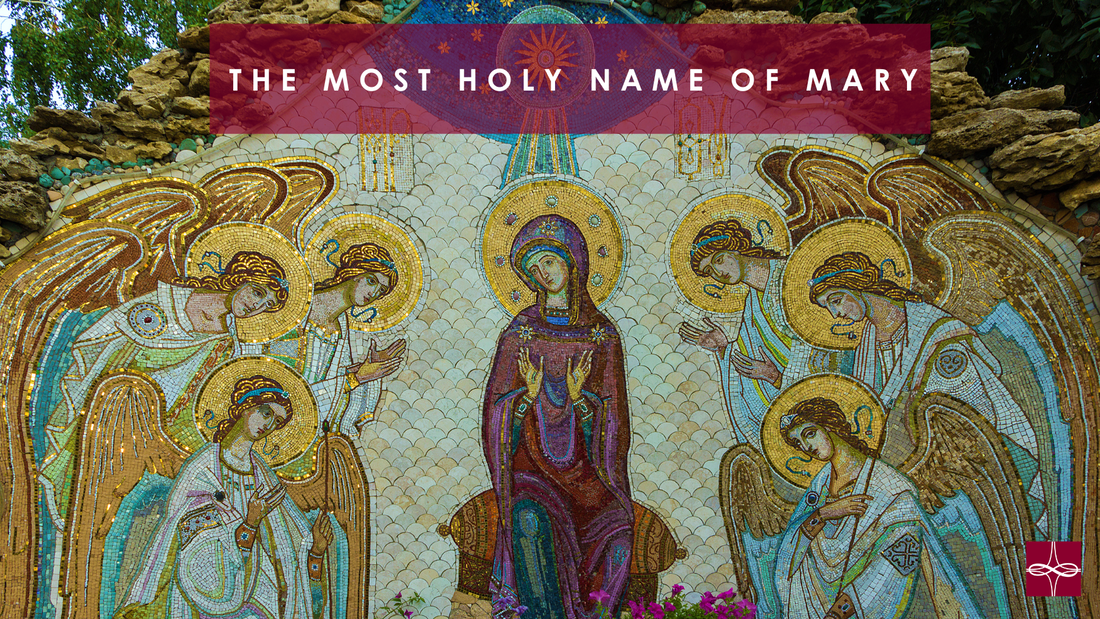
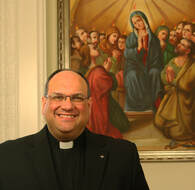
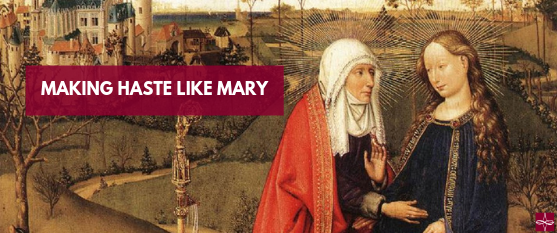

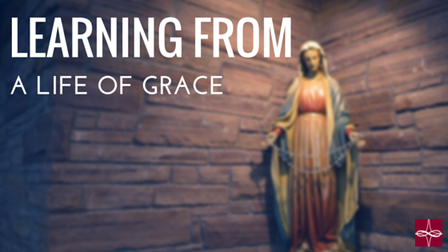

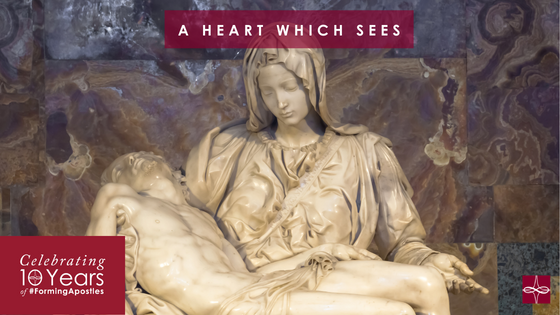

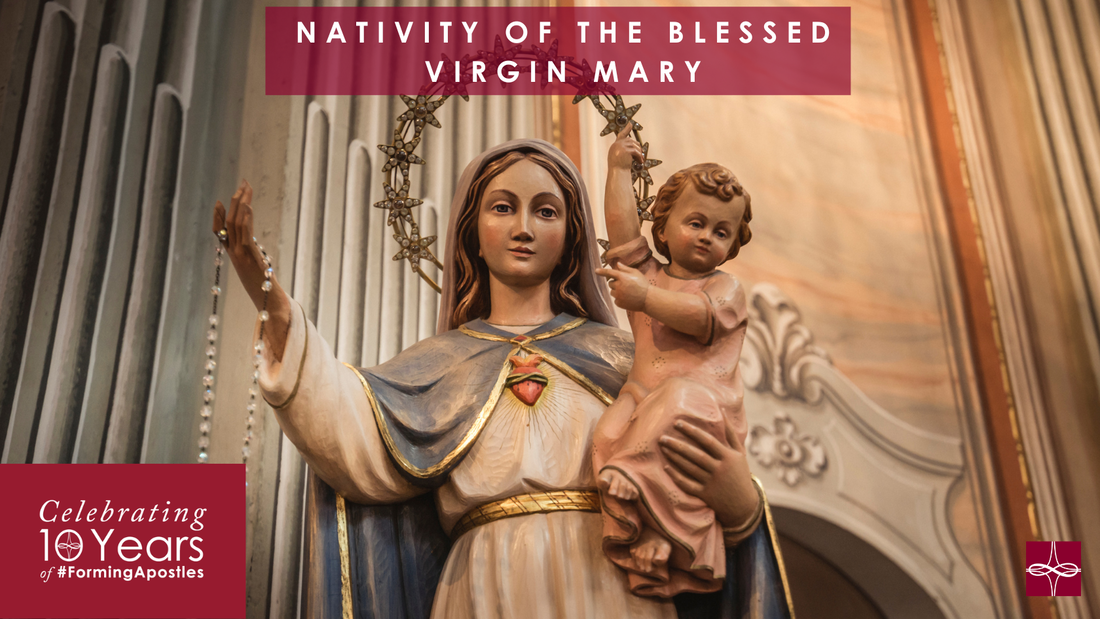
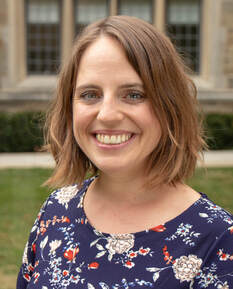
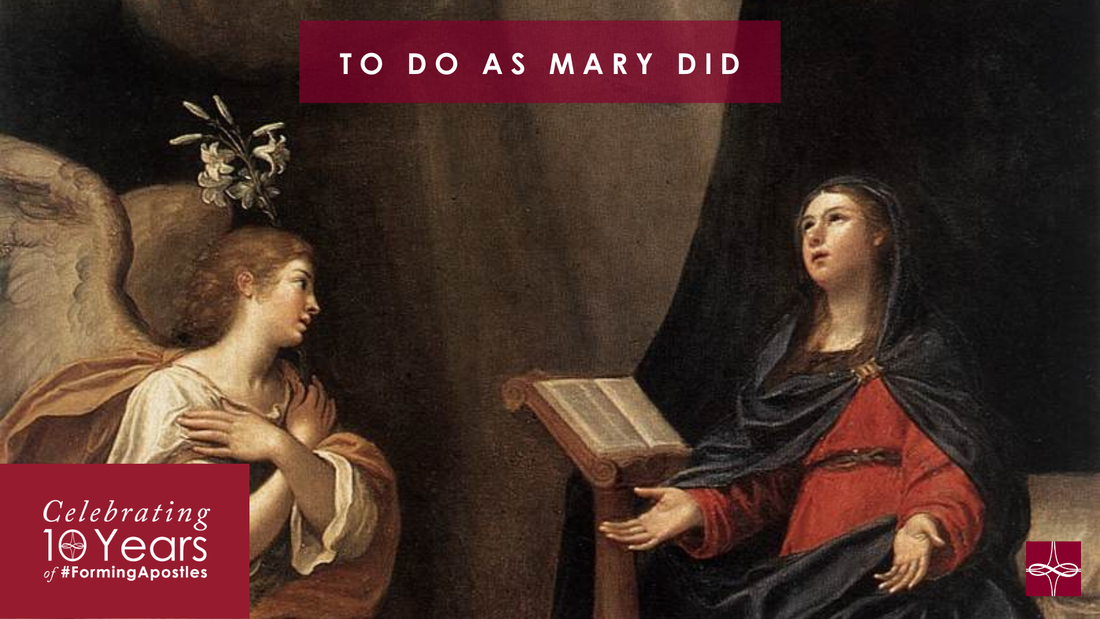
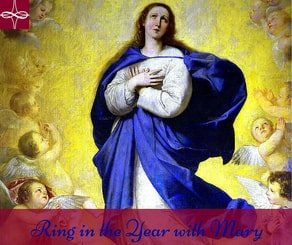
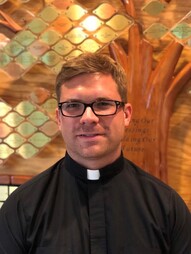
 RSS Feed
RSS Feed